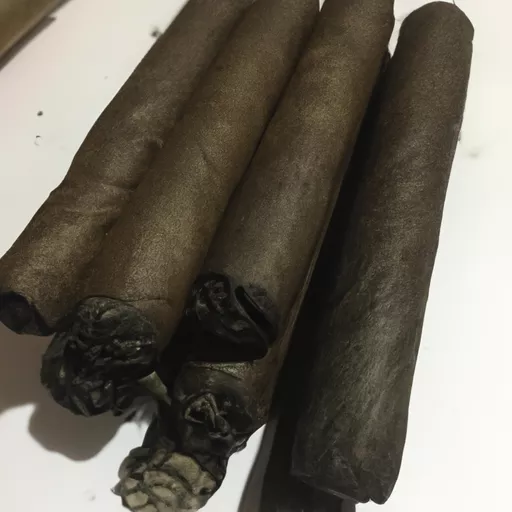
As someone who enjoys the occasional cigar, I have always been intrigued by little cigars. These small, compact versions of traditional cigars have become increasingly popular in recent years. In this article, I will delve into the world of little cigars and explore their history, flavors, and why they have gained a dedicated following among cigar enthusiasts.
Let’s start with the basics: what exactly are little cigars? Little cigars are essentially a smaller version of a traditional cigar. They typically measure around 3 inches in length and have a thin ring gauge, usually between 20-24. This makes them shorter and thinner than a regular cigar, which can range from 5-7 inches in length and have a larger ring gauge of 40-60. Little cigars also differ from cigarettes in that they are made of 100% tobacco, while cigarettes contain a blend of tobacco and additives.
Now that we have a better understanding of what little cigars are, let’s take a closer look at their history. While cigars have been around for centuries, little cigars have a more recent origin. In the mid-20th century, tobacco companies began to produce smaller versions of cigars to appeal to a wider audience. These were marketed as a more affordable and convenient option for those who enjoyed the taste of cigars but didn’t have the time to smoke a full-sized one. Originally, little cigars were made using scraps of tobacco left over from producing larger cigars, making them a more economical choice.
Fast forward to the present day, and little cigars have evolved into a niche market within the cigar industry. They come in a variety of flavors and styles, and some even mimic the appearance of traditional cigars with a cigar band and a filter tip.
One of the main reasons for the popularity of little cigars is the convenience factor. Their smaller size makes them easy to carry in a pocket or bag, and they can be quickly enjoyed in a shorter amount of time. This makes them a popular choice for those who want to enjoy a cigar on the go or don’t have the time for a full-sized one.
Another factor that sets little cigars apart is their affordability. While traditional premium cigars can cost anywhere from $5 to $25 or more, little cigars are usually more budget-friendly, with prices ranging from $1 to $5. This makes them an appealing option for those who are looking for a more cost-effective way to enjoy a cigar.
Now, let’s talk about flavors. Little cigars come in a wide range of flavors, from fruity and sweet to rich and bold. Some of the most popular flavors include cherry, vanilla, and chocolate, as well as more traditional tobacco flavors like natural and menthol. You can also find little cigars infused with popular liquors, such as rum or whiskey.
When it comes to smoking a little cigar, the experience is similar to that of a traditional cigar. You can use a cutter to make a small hole in the cap, or you can simply bite off a small piece to open it up for smoking. Like a larger cigar, you want to make sure to light it evenly and slowly to ensure a smooth, consistent burn. The smoke from a little cigar is also typically thicker and more aromatic than that of a cigarette.
One important thing to note is that although little cigars are smaller and often cheaper than traditional cigars, they still contain the same amount of nicotine and other chemicals found in cigarettes. So, if you are a non-smoker or trying to quit, little cigars should not be considered a safer option.
In recent years, little cigars have also sparked controversy over their appeal to minors. Some believe that the sweet and fruity flavors of little cigars make them attractive to younger smokers. In response to this concern, the FDA has implemented regulations that require little cigars to include a health warning label and be subject to the same laws as cigarettes when it comes to marketing and packaging.
There are also some misconceptions about little cigars, such as the belief that they are just glorified cigarettes. However, this is not the case. Little cigars are made with quality tobacco leaves and produced using similar techniques to traditional cigars, including being aged and fermented for flavor.
In the world of cigars, there is often a debate between traditional cigar smokers and little cigar enthusiasts. Some may argue that a traditional cigar is the only way to truly appreciate the flavors and complexity of the tobacco. Others, like myself, see the value in both and enjoy the convenience and variety that little cigars offer.
In conclusion, little cigars offer a unique and enjoyable experience for those who appreciate the taste of a cigar but don’t always have the time or budget for a full-sized one. With their rich history, variety of flavors, and convenient size, it’s no wonder they have gained a dedicated following among cigar enthusiasts. So, if you’re looking to try something new and enjoy a good smoke, I highly recommend giving a little cigar a try.
